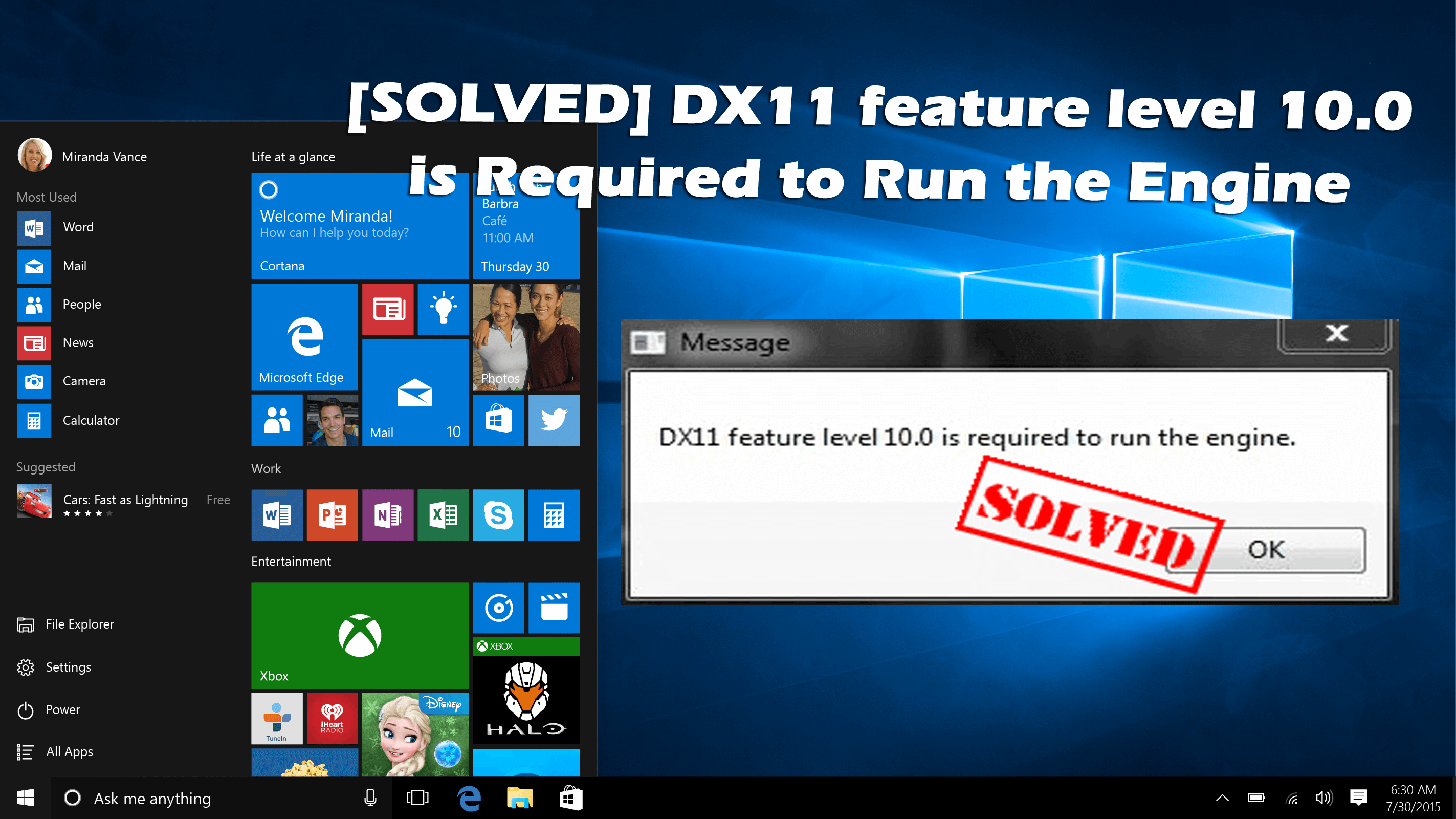



See this blog post and MSDN: Direct3D feature levelsįor example, if you have Windows 7 installed, then you have the DirectX 11.0 Runtime or the partial DirectX 11.1 Runtime update. With Windows 10, you have the DirectX 12.0 Runtime which supports 11.3 (or with the November 2015 build 10586, 11.4) as well as 12.0 If you have Windows 8.1, then you have the DirectX 11.2 Runtime. The version of the DirectX Runtime doesn't indicate anything about whether or not the system is running a Direct3D 9-era Shader Model 2.0 part (which would be D3D_FEATURE_LEVEL_9_1 or D3D_FEATURE_LEVEL_9_2), a Shader Model 3.0 part ( D3D_FEATURE_LEVEL_9_3), a Direct3D 10 video card from 2006,( D3D_FEATURE_LEVEL_10_0 or D3D_FEATURE_LEVEL_10_1), a Direct3D 11 video card from 2010 ( D3D_FEATURE_LEVEL_11_0), or a just released latest card ( D3D_FEATURE_LEVEL_11_1, D3D_FEATURE_LEVEL_12_0, or D3D_FEATURE_LEVEL_12_1). In fact, with Windows 10 an application can be using Directx 11.4 and in theory require a D3D_FEATURE_LEVEL_12_1 Direct3D Feature Level video card to run. The game system requirements state a minimum of DX11 Compatible GeForce GTX 460 1GB or AMD HD 6850 1GB which are 2010-era video cards.


 0 kommentar(er)
0 kommentar(er)
